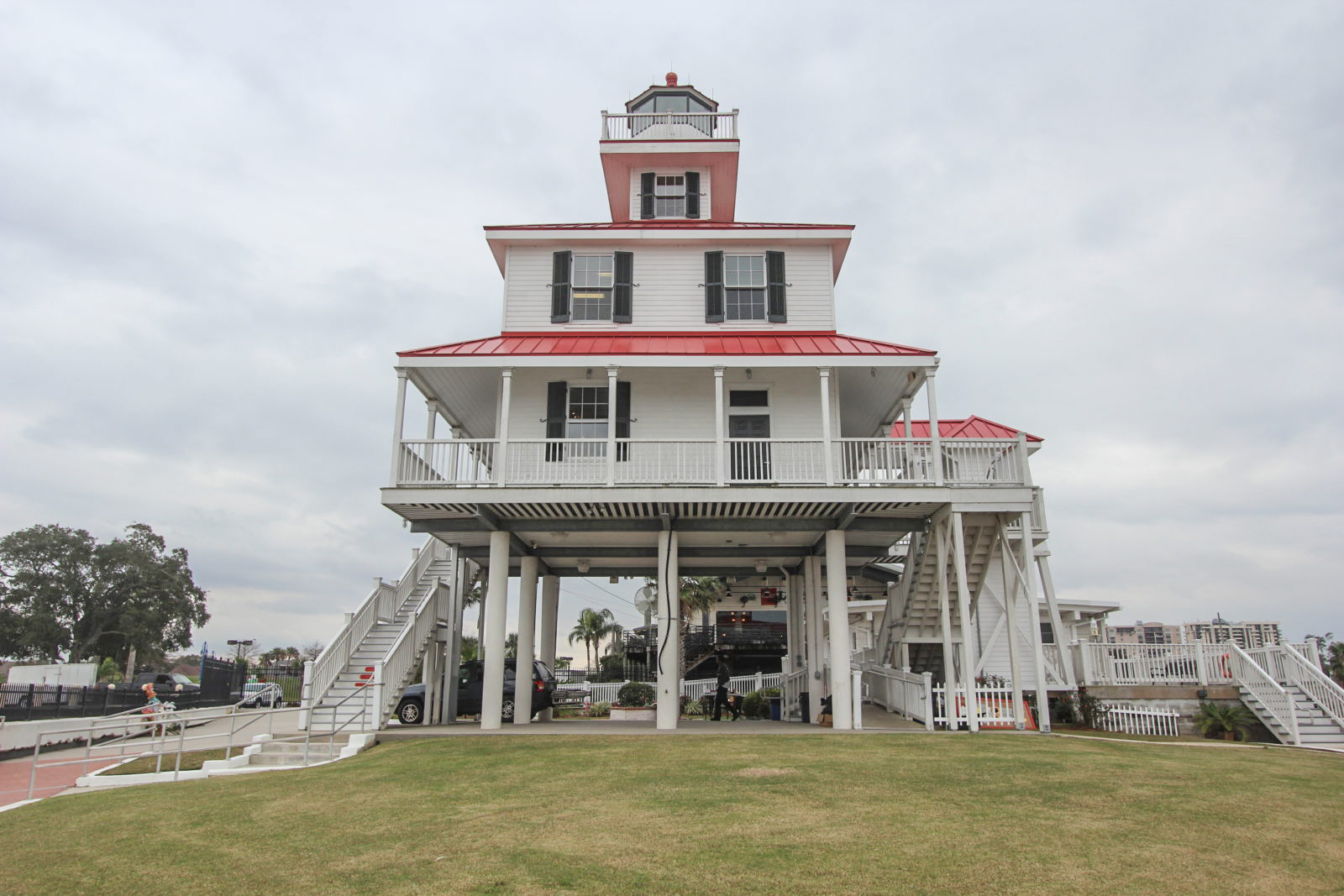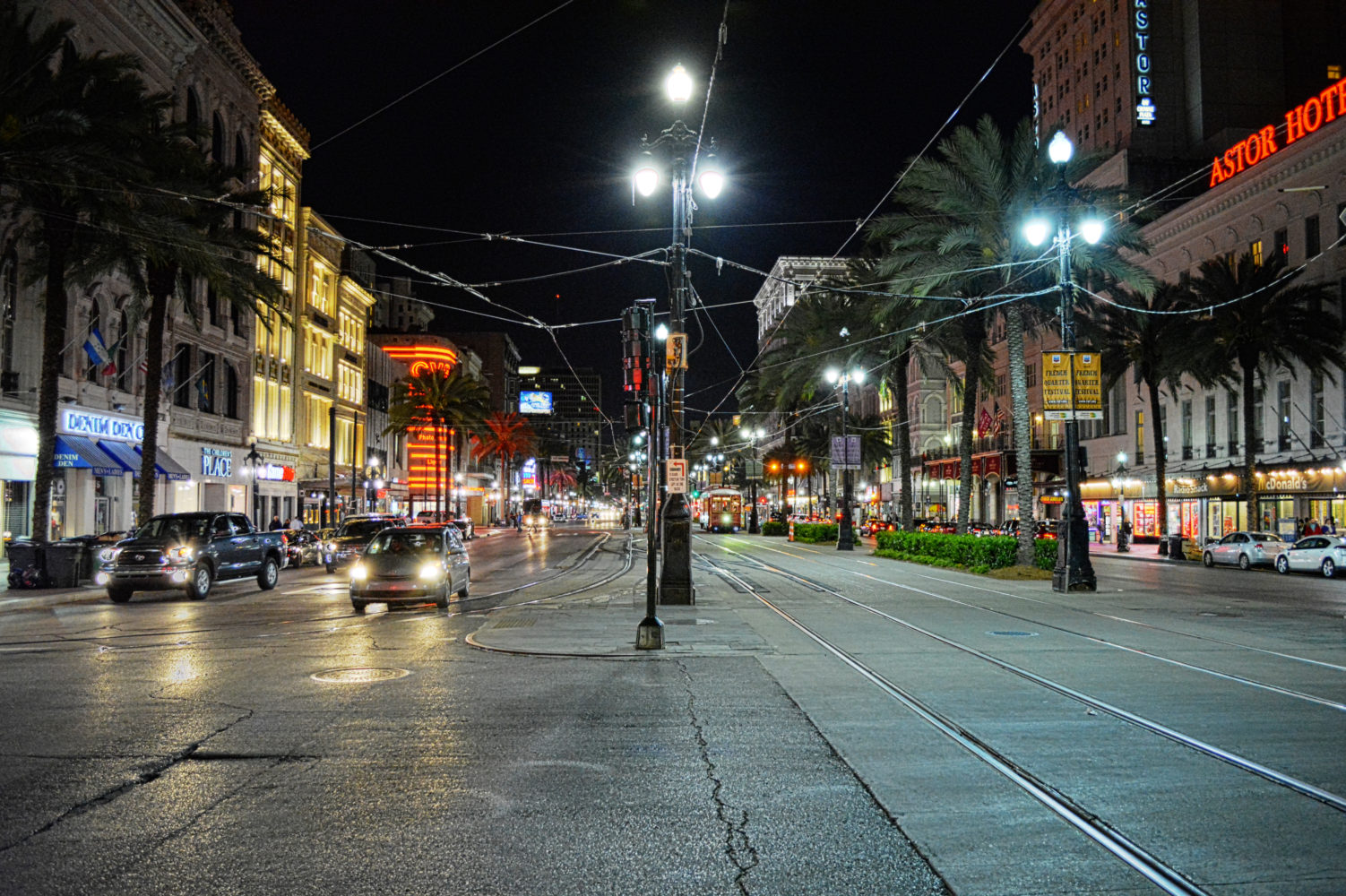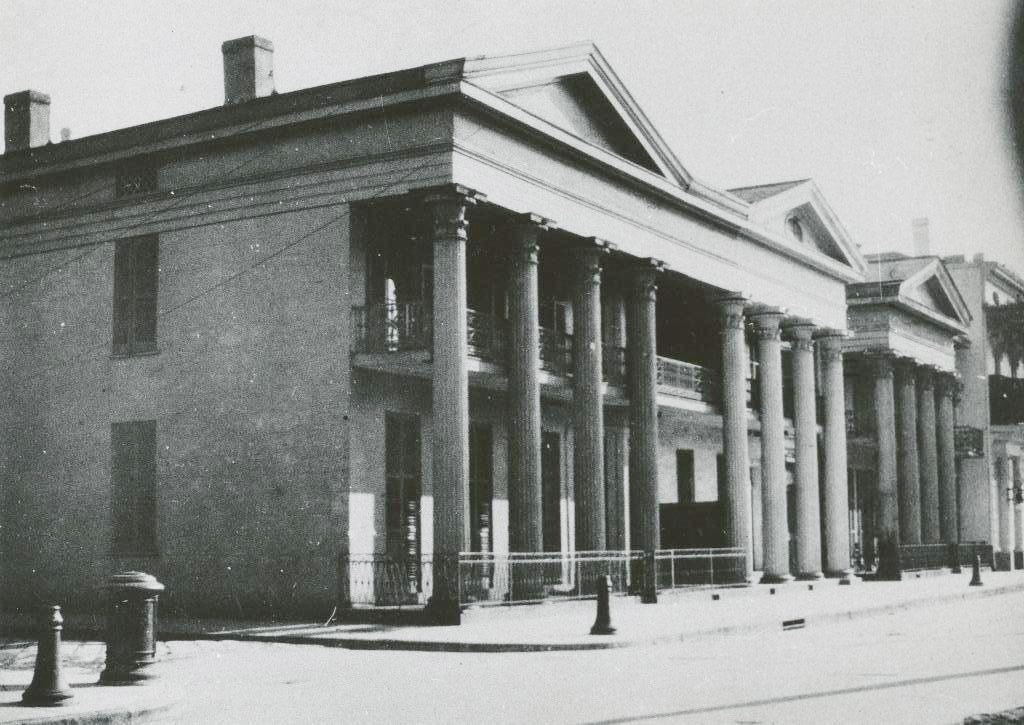This story appeared in the May issue of the PRC’s Preservation in Print magazine. Interested in getting more preservation stories like this delivered to your door monthly? Become a member of the PRC for a subscription!
For anyone with fond memories of time on the lakefront or in the West End, the New Canal Lighthouse’s red roof and silhouette at dusk are instantly sentimental. It’s about the only thing on the New Orleans lakefront that’s been essentially unchanged for more than 100 years. It’s also about 17 feet higher than its original builders intended.
The current lighthouse is the fourth one on this site. It is a faithful reconstruction of the third. This spring, the Preservation Resource Center and Lake Pontchartrain Basin Foundation have organized a series of talks about the intersection of historic preservation and climate change inspired in large part by the lighthouse’s current situation. Learn more here.
Preservationists face many difficult decisions. Our eroding coastline means that some buildings are in locations that are no longer sustainable; others require adaption to remain as connections to our past.
A shipping shortcut through Lake Pontchartrain is the reason why New Orleans was sited exactly where it is. New Orleans’ connection to the lake is essential. While the city’s origin and a good deal of its sustenance — be it trade or seafood — owe much to the lake, the actual lakefront has undergone a series of dramatic changes, beholden to the whims of the city.
Advertisement
Lighthouses were erected to mark key points for commerce at Bayou St. John, the New Canal and Milneburg. Resort areas followed and flourished at all three locations, and generations of New Orleanians escaped to them during the heat of summer via streetcar or train. The biggest change came in the 1920s and ’30s, when a massive land-building project extended New Orleans more than half a mile into Lake Pontchartrain, swallowing Milneburg and Spanish Fort.
At New Canal Lighthouse, the land merely caught up with its long jetty and ended its relative isolation from shore. That land-building project gave us the mid-20th century neighborhoods of Lakeshore and Lake Vista, and while they introduced the lakefront’s Mid-Century Modern aesthetic, they also rubbed shoulders with a light station in continuous use, albeit through several iterations, since 1838.
The first New Canal light was a simple wooden tower, erected at the end of a long jetty which protected the entrance of the newly completed canal that terminated near where the Superdome stands today. That first tower was replaced by a one-story, cottage-type lighthouse in 1855.
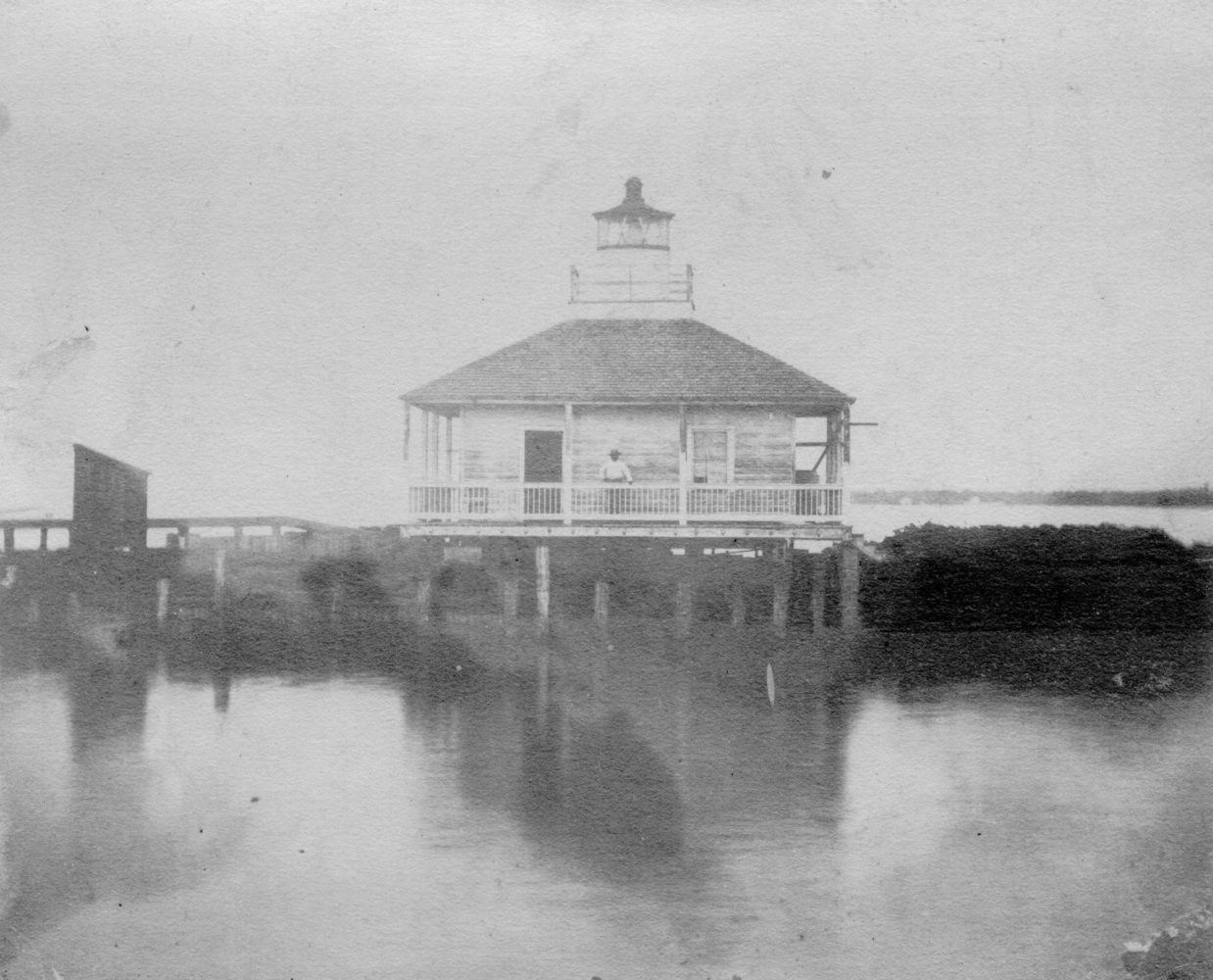
The second New Canal Lighthouse stood from 1855 to 1889. The date of this photo is unknown. Photo via Wikimedia Commons
When the Southern Yacht Club (longtime New Canal neighbors) erected a new, two-story clubhouse at the end of the 1870s, it necessitated that the lighthouse be raised. A three-story lighthouse, the third on site, was completed in 1890.
Through these three lighthouses New Canal has the unusual distinction of having had five women keepers. One mother-daughter team, Mary and Caroline Campbell, held the title of New Canal keeper between them for more than 50 years; Caroline grew up at New Canal.
New Canal Lighthouse spent most of the 20th century as the barracks for the lakefront Coast Guard station. When the Coast Guard began making plans to move into a larger facility in nearby Bucktown Harbor, those who served at the lighthouse and had formed an attachment to it hoped that it could continue to serve the public in another capacity once it was retired. Hurricane Katrina interrupted negotiations by the Lake Pontchartrain Basin Foundation to acquire the property as its education center, knocking the lighthouse off its foundation and depositing it roughly 20 feet to the south. Despite being moved, the 1890 lighthouse remained upright until the winds of a November cold snap collapsed its first floor.
LPBF took over the property in 2006. The Coast Guard assisted in cleaning out the annex building that would serve as the education center until the lighthouse was complete, and the lighthouse itself was dismantled and put into storage.
When disassembled, New Canal Lighthouse lost the National Register of Historic Places designation it had earned in 1985. It was rebuilt in 2012 with a mixture of historic and modern materials. Original wide-plank heart of pine still makes up the floor of the first-floor exhibition space and connects the third and fourth lighthouses, but the steel foundation and elevation to 17 feet are novel.
LPBF is now preparing an application to have the lighthouse listed once more on the National Register, this time as a reconstruction.
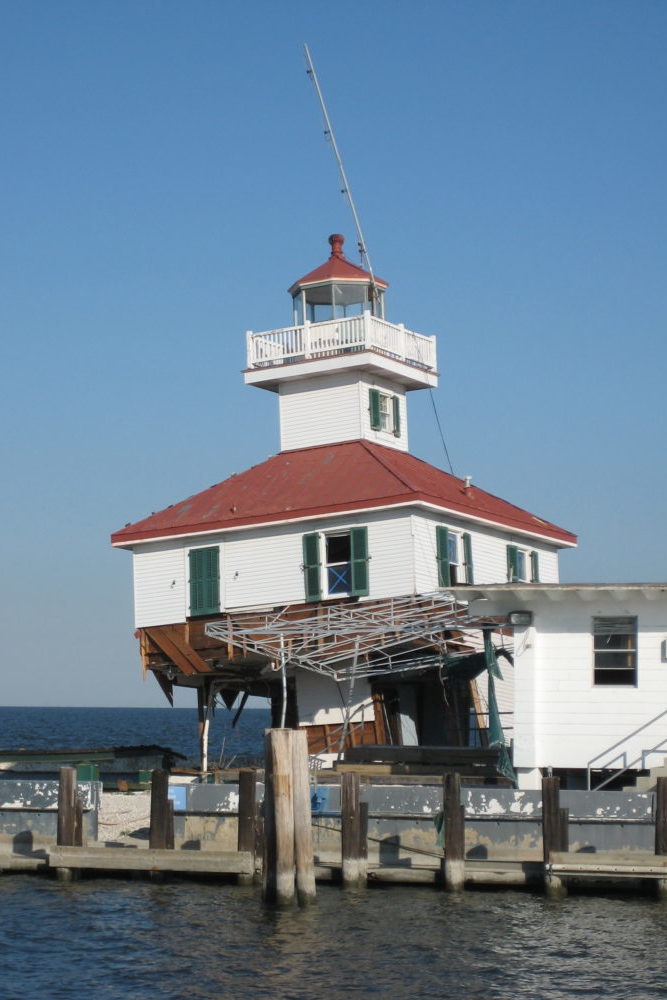
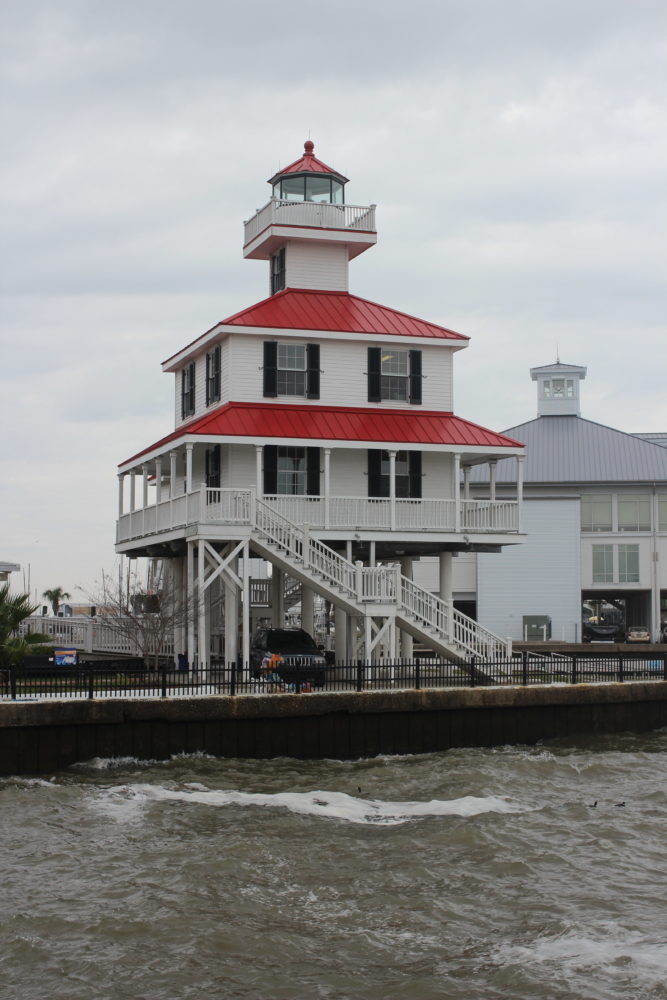
1: The lighthouse was heavily damaged in Hurricane Katrina. It is pictured here in November 2005. Photo by Infrogmation.
2: The current lighthouse is the fourth one on the site. It is a faithful reconstruction of the third. Photo by Liz Jurey.
Since opening to the public in 2013, the lighthouse has served a new purpose: to educate. In a way its new job isn’t too different from its historic role. A lighthouse warns of dangers; it also can show the way forward or welcome mariners into a harbor. Today, we warn of the dire situation of our coast and apprise children and adults of not only the actions that must be taken to save it but also the science behind those solutions.
We welcome a new generation into the fields of science and ecology through field trips, events and activities right on the water. The lighthouse is again serving as a landmark in a new generation’s growing memory of the lakefront, though for many it is a reintroduction to the lake that the lighthouse provides.
The generation that preceded the children who visit on field trips today grew up when Lake Pontchartrain was in crisis. The dredging of rangia clams for paving had removed the estuary’s natural cleaners, at the same time pollution from a variety of sources found its way in. From the 1970s on, Lake Pontchartrain and many of the rivers that flow into it earned a bad reputation. Through education, advocacy, consistent monitoring and effort, Lake Pontchartrain has been brought back into good health.
Advertisement
While many people around the basin contributed to this effort, a large part of the thanks for cleaning up Lake Pontchartrain go to the clams. By restoring the population of rangia clams, the lake now cleans itself naturally. Similarly, restoring or mimicking other natural processes, from barrier island restoration to sediment diversions, is a large part of Louisiana’s plan to restore the coast.
From the now-elevated gallery of the lighthouse, visitors can see the full sweep of the horizon from west to east. Visitors can also look over their shoulder and see the seawall, the levees and the floodgates, successively built up and strengthened as our coast eroded and the threat of storm surge increased.
Though New Canal Lighthouse itself has been adapted to face these threats, its essential shape and elements remain, and there are few better places to ponder the big connections between the water, our past and our future.
Chris Cook is the director of the New Canal Lighthouse Museum for the Lake Pontchartrain Basin Foundation.
Historic Preservation in the Face of Climate Change Part II: Adapt
May 15, 6-7:30 PM • New Canal Lighthouse, 8001 Lakeshore Drive
The second panel discussion in the 3-part Historic Preservation & Climate Change series will discuss the balance between authenticity and long-term survival of historic spaces. Learn more & RSVP!
Advertisements




